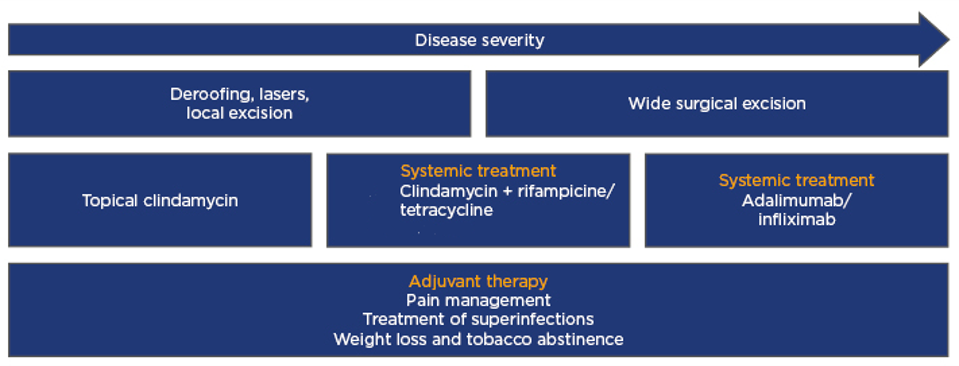Causes
The exact causes aren't known. It develops when hair follicles in the skin become blocked. Medical specialists think it could be connected to hormones, inherited genes, and immune system problems. Smoking, excess weight, and other factors might play a role in triggering HS.
HS is a noncommunicable disease, meaning it cannot be directly transmitted between people.
WHY?
The exact causes of HS are still unclear, but research into this is ongoing.
AGE
HS commonly occurs during our puberty, reducing in prevalence after the age of 50.
SEX
In Western countries females appear more likely to report HS than males, whilst in Eastern countries it can be the opposite.
GENETICS
Research shows HS may run in families, about a third of cases appear to have a first-degree relative with the condition (e.g. Mother, Father, Brother, or Sister).
Treatment
Treatment with medications, surgery or both may help control symptoms and prevent complications. No single option has been proven to be completely reliable, and research continues to determine the best combination. Talk with your doctor about the risks and benefits of the various treatment options and developing an approach tailored to your situation.

Expect to have regular follow-up visits with your dermatologist or a multidisciplinary health care team that can provide the comprehensive care often required by people with hidradenitis suppurativa.
Figure from Zouboulis et al. (2015)
Reference: Zouboulis, C.C., Desai, N., Emtestam, L., Hunger, R.E., Ioannides, D., Juhász, I., Lapins, J., Matusiak, L., Prens, E.P., Revuz, J., Schneider-Burrus, S., Szepietowski, J.C., van der Zee, H.H and Jemec, G.B. (2015) ‘European S1 guideline for the treatment of hidradenitis suppurativa/acne inversa’, Journal of the European Academy of Dermatology and Venereology, 29(4), 619–644.
HS Patient Decision Aid (HS PDA)
As shown above in the diagram above, many HS treatment options are available currently. However, no single treatment has been shown to work for all people with HS and often multiple treatments are used at the same time. The variety of treatment options can be overwhelming at times.
To help people gain a better understanding of the many HS treatments, researchers in Canada have developed a HS PDA, available here.
This HS-PDA tool was carefully designed to help you be better informed about the many HS treatments. HS-PDA has all relevant background information to help you understand each option. Using this tool will increase your understanding of the choices available and will help you have an informed discussion with your GP, dermatologist, surgeon, and any others involved in your care. This tool will help you be more knowledgeable, informed, and allow you take an active role in important health decisions affecting you.

